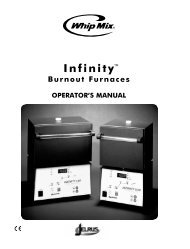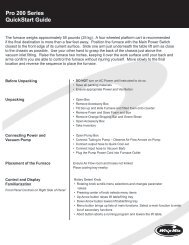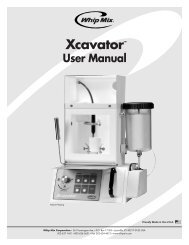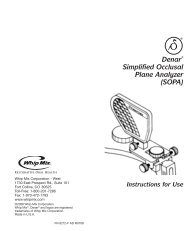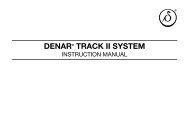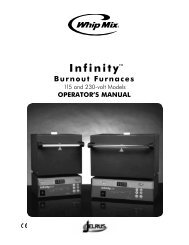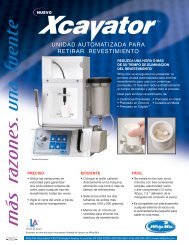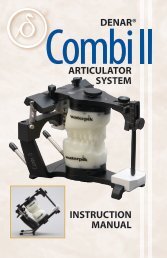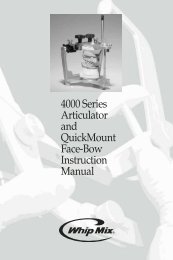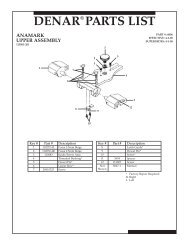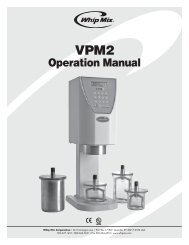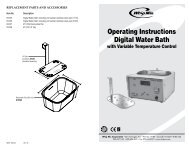3000 Series Articulator and Quick Mount Face-Bow ... - Whip Mix
3000 Series Articulator and Quick Mount Face-Bow ... - Whip Mix
3000 Series Articulator and Quick Mount Face-Bow ... - Whip Mix
Create successful ePaper yourself
Turn your PDF publications into a flip-book with our unique Google optimized e-Paper software.
Fig. 38<br />
Have the patient close into a position of maximum<br />
intercuspation <strong>and</strong> verify relative tooth position noted<br />
earlier. The maxillary <strong>and</strong> m<strong>and</strong>ibular posterior teeth<br />
will automatically create “cuspal indents” in the<br />
registration material.<br />
Fig. 39<br />
Maintain this position while the elastomer is setting. Remove<br />
<strong>and</strong> examine the maximum intercuspation wax record for:<br />
a. The presence of adequate cuspal indents.<br />
b. The absence of perforation, <strong>and</strong>/or soft<br />
tissue contact.<br />
Lateral Records<br />
Trim a wax record to the size of the centric relation record<br />
(refer to Section on Centric Relation Record).<br />
Fig. 40<br />
The thickness on the non-working side may have to be<br />
increased to achieve “cuspal indents” of the posterior teeth<br />
when the m<strong>and</strong>ible has moved 4–6 mm laterally from the<br />
centric relation position. Observe the interocclusal space<br />
with the m<strong>and</strong>ible in this position <strong>and</strong> use some of the<br />
previously trimmed excess wax to build up the required<br />
thickness if necessary.<br />
Warm the wax record in water until the tooth-contacting<br />
edges are soft enough to offer no resistance, then position<br />
the wax record against the maxillary posterior teeth. Do not<br />
press the record against the teeth or you may perforate the<br />
thin record.<br />
16



